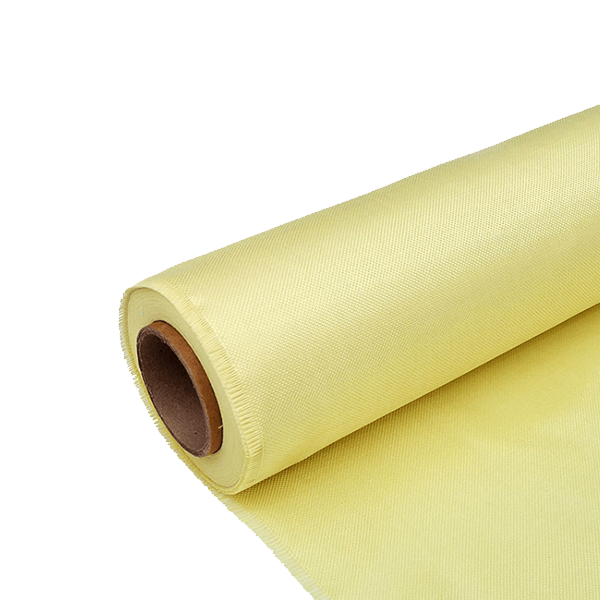ارتفاع أسعار راتنجات الإيبوكسي: ما يعنيه ذلك للمصنعين
-
جدول المحتويات
“Navigating the Surge: How Rising Epoxy Resin Prices Impact Manufacturers’ Bottom Lines.”
The rising prices of epoxy resin have significant implications for manufacturers across various industries. As a critical material used in applications ranging from construction to automotive and electronics, fluctuations in epoxy resin costs can impact production budgets, pricing strategies, and overall profitability. This increase is driven by factors such as supply chain disruptions, increased demand, and raw material shortages. Manufacturers must navigate these challenges by exploring alternative materials, optimizing production processes, and adjusting pricing models to maintain competitiveness in a changing market landscape. Understanding the dynamics of epoxy resin pricing is essential for strategic planning and long-term sustainability in manufacturing operations.
Impact of Rising Epoxy Resin Prices on Production Costs
The rising prices of epoxy resin have become a significant concern for manufacturers across various industries, as these increases directly impact production costs and overall profitability. Epoxy resin, a versatile material widely used in coatings, adhesives, and composite materials, has seen a notable surge in demand due to its superior properties, including durability, chemical resistance, and adhesion. However, as the prices of raw materials and production processes escalate, manufacturers are faced with the challenge of maintaining competitive pricing while ensuring product quality.
One of the primary effects of rising epoxy resin prices is the immediate increase in production costs. Manufacturers who rely heavily on epoxy resin as a key component in their products must absorb these costs or pass them on to consumers. This decision is not straightforward, as raising prices can lead to decreased demand, particularly in price-sensitive markets. Consequently, manufacturers must carefully evaluate their pricing strategies to balance profitability with market competitiveness. In many cases, companies are forced to explore alternative materials or formulations that could mitigate the impact of rising resin prices, although such changes may require significant research and development investments.
Moreover, the increase in epoxy resin prices can disrupt supply chains, leading to further complications for manufacturers. As suppliers adjust their pricing structures in response to rising raw material costs, manufacturers may experience delays or shortages in their supply of epoxy resin. This situation can hinder production schedules and lead to increased lead times for customers, ultimately affecting customer satisfaction and loyalty. To counteract these challenges, manufacturers may need to diversify their supplier base or invest in long-term contracts to secure more stable pricing and availability of epoxy resin.
In addition to immediate production costs, the rising prices of epoxy resin can also have a ripple effect on the entire manufacturing ecosystem. For instance, industries that rely on epoxy resin, such as automotive, aerospace, and construction, may face increased costs that could lead to higher prices for end consumers. This scenario can create a cycle of inflation, where rising costs in one sector lead to increased prices in others, ultimately affecting the broader economy. As manufacturers grapple with these challenges, they must also consider the potential for reduced consumer spending, which could further exacerbate the situation.
Furthermore, the rising prices of epoxy resin may prompt manufacturers to invest in more efficient production technologies or processes. By adopting advanced manufacturing techniques, such as automation or lean manufacturing principles, companies can potentially reduce waste and improve productivity, thereby offsetting some of the increased costs associated with epoxy resin. This shift not only helps manufacturers maintain their profit margins but also positions them to be more resilient in the face of future price fluctuations.
In conclusion, the rising prices of epoxy resin present a multifaceted challenge for manufacturers, impacting production costs, supply chain dynamics, and overall market competitiveness. As companies navigate these complexities, they must adopt strategic approaches to manage costs while ensuring product quality and customer satisfaction. By exploring alternative materials, diversifying suppliers, and investing in efficient production technologies, manufacturers can better position themselves to thrive in an evolving market landscape. Ultimately, the ability to adapt to rising epoxy resin prices will be crucial for sustaining growth and maintaining a competitive edge in the industry.
Strategies for Manufacturers to Mitigate Price Increases

As the prices of epoxy resin continue to rise, manufacturers are faced with the pressing challenge of adapting their strategies to mitigate the impact of these increases on their operations and profitability. The escalating costs can be attributed to various factors, including supply chain disruptions, increased demand in various industries, and fluctuations in raw material prices. Consequently, manufacturers must adopt a multifaceted approach to navigate this evolving landscape effectively.
One of the most effective strategies for manufacturers is to enhance their supply chain management. By diversifying suppliers and establishing relationships with multiple vendors, manufacturers can reduce their dependency on a single source, thereby minimizing the risk of price volatility. Additionally, negotiating long-term contracts with suppliers can provide price stability and predictability, allowing manufacturers to better plan their budgets and production schedules. Furthermore, investing in local suppliers can help mitigate transportation costs and lead times, which have become increasingly significant in the current economic climate.
In tandem with supply chain diversification, manufacturers should also consider optimizing their production processes. Implementing lean manufacturing principles can lead to increased efficiency and reduced waste, ultimately lowering production costs. By streamlining operations and adopting just-in-time inventory practices, manufacturers can minimize excess inventory and reduce holding costs. Moreover, investing in automation and advanced manufacturing technologies can enhance productivity and reduce labor costs, providing a buffer against rising material prices.
Another critical strategy involves product innovation and formulation adjustments. Manufacturers can explore alternative materials or additives that may offer similar performance characteristics to traditional epoxy resins but at a lower cost. This approach not only helps in managing expenses but also opens up opportunities for developing new products that cater to emerging market demands. Additionally, manufacturers can focus on creating value-added products that justify a higher price point, thereby offsetting the impact of rising raw material costs.
Collaboration with customers is also essential in navigating price increases. By engaging in open dialogue with clients, manufacturers can better understand their needs and expectations, allowing for more tailored solutions. This collaboration can lead to shared cost-saving initiatives, such as joint development projects or bulk purchasing agreements, which can help stabilize prices for both parties. Furthermore, transparent communication about the reasons behind price increases can foster trust and understanding, enabling manufacturers to maintain strong customer relationships even in challenging economic conditions.
Moreover, manufacturers should consider revisiting their pricing strategies. While raising prices may seem like a straightforward solution to counteract rising costs, it is crucial to approach this carefully. Conducting market research to understand competitors’ pricing and customer willingness to pay can inform more strategic pricing decisions. Implementing tiered pricing models or offering discounts for bulk purchases can also help maintain customer loyalty while addressing the need for increased revenue.
In conclusion, as epoxy resin prices continue to rise, manufacturers must adopt a proactive and strategic approach to mitigate the impact of these increases. By enhancing supply chain management, optimizing production processes, innovating product offerings, collaborating with customers, and revisiting pricing strategies, manufacturers can navigate this challenging environment more effectively. Ultimately, those who adapt and innovate in response to these market dynamics will be better positioned to thrive in an increasingly competitive landscape.
Future Trends in Epoxy Resin Pricing and Market Demand
The epoxy resin market has experienced significant fluctuations in pricing over the past few years, and current trends suggest that this volatility is likely to continue. As manufacturers navigate these changes, understanding the factors driving epoxy resin prices and the implications for market demand becomes increasingly crucial. One of the primary drivers of rising prices is the ongoing supply chain disruptions that have affected various industries globally. The COVID-19 pandemic, for instance, highlighted vulnerabilities in supply chains, leading to shortages of raw materials essential for epoxy resin production. As manufacturers strive to secure these materials, the increased competition has inevitably driven prices upward.
Moreover, the growing demand for epoxy resins across multiple sectors, including automotive, construction, and electronics, further complicates the pricing landscape. As industries increasingly adopt advanced technologies and sustainable practices, the need for high-performance materials like epoxy resins has surged. This heightened demand, coupled with limited supply, creates a perfect storm for price increases. Manufacturers must not only contend with rising costs but also adapt to the evolving preferences of consumers who are increasingly seeking eco-friendly and high-performance products.
In addition to supply chain issues and demand fluctuations, geopolitical factors also play a significant role in shaping the future of epoxy resin pricing. Trade policies, tariffs, and international relations can impact the availability and cost of raw materials, which in turn affects the overall pricing structure of epoxy resins. For instance, tensions between major producing countries can lead to export restrictions or increased tariffs, further straining supply chains and driving prices higher. As manufacturers look to mitigate these risks, they may need to diversify their sourcing strategies or invest in alternative materials, which could also influence pricing dynamics.
Looking ahead, it is essential for manufacturers to remain agile and responsive to these market trends. The ability to forecast changes in pricing and demand will be critical for maintaining competitiveness. Companies that invest in research and development to innovate new formulations or improve production efficiency may find themselves better positioned to navigate the challenges posed by rising prices. Additionally, fostering strong relationships with suppliers can help manufacturers secure more stable pricing and ensure a reliable supply of materials.
Furthermore, as sustainability becomes a focal point for many industries, manufacturers may need to explore bio-based epoxy resins or other environmentally friendly alternatives. While these options may initially come with higher production costs, the long-term benefits of aligning with consumer preferences for sustainable products could outweigh these challenges. As the market evolves, manufacturers that prioritize sustainability may not only enhance their brand reputation but also tap into new customer segments willing to pay a premium for eco-friendly solutions.
In conclusion, the rising prices of epoxy resins present both challenges and opportunities for manufacturers. By understanding the underlying factors driving these trends and adapting their strategies accordingly, companies can position themselves for success in a dynamic market. As the demand for epoxy resins continues to grow, manufacturers that remain proactive and innovative will be better equipped to navigate the complexities of pricing and supply chain management, ultimately ensuring their long-term viability in an increasingly competitive landscape.
الأسئلة والأجوبة
1. **Question:** Why are epoxy resin prices rising?
**Answer:** Epoxy resin prices are rising due to increased demand in various industries, supply chain disruptions, and higher raw material costs.
2. **Question:** How does the rise in epoxy resin prices affect manufacturers?
**Answer:** Manufacturers may face increased production costs, which can lead to higher prices for end products, reduced profit margins, and potential shifts in sourcing strategies.
3. **Question:** What strategies can manufacturers adopt to mitigate the impact of rising epoxy resin prices?
**Answer:** Manufacturers can explore alternative materials, optimize production processes, negotiate long-term contracts with suppliers, and pass some costs onto consumers.The rising prices of epoxy resin indicate increased production costs for manufacturers, potentially leading to higher prices for end products. This trend may force manufacturers to seek cost-effective alternatives, optimize production processes, or pass on the costs to consumers. Additionally, it could impact market competitiveness and innovation within the industry, as companies adjust to the changing economic landscape. Overall, the increase in epoxy resin prices presents both challenges and opportunities for manufacturers to adapt and evolve in response to market demands.











